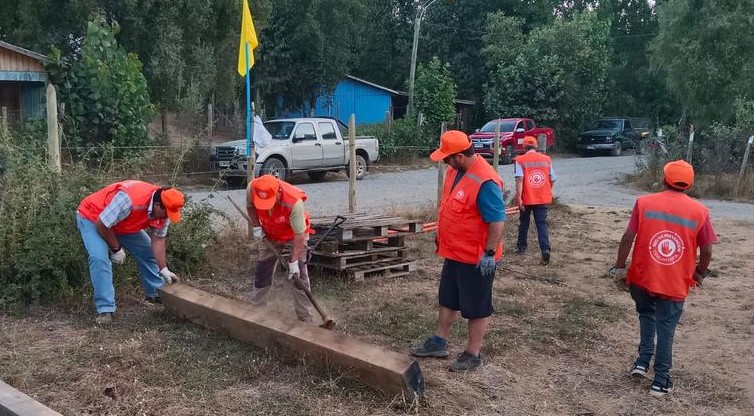Biobío: Three Municipalities Have Approved Their Emergency and Risk Plans
- The director of Senapred explained that this year there are resources available to support municipal management in the creation and updating of these plans.
Curanilahue, Santa Juana, and Tomé are the three municipalities in the Biobío Region that have approved their communal emergency and disaster risk reduction plans.
These are instruments that, since last year, have been mandatory for each municipality as part of the national plan aimed at standardizing risk detection and strategic actions to mitigate them at the local level.
The regional director of Senapred, Alejandro Sandoval, explained that several municipalities already had their plans in place before the law was enacted in 2021.
Specifically, 29 of the 33 municipalities in Biobío had a Communal Emergency Plan (PCE), while only 5 had Communal Disaster Risk Reduction Plans (PCRRD). However, nearly three years after the legislation took effect, Lota, Hualqui, Hualpén, Chiguayante, Yumbel, Contulmo, San Rosendo, Quilaco, Tucapel, and Arauco have yet to submit any.
SENAPRED REVIEW
"Taking stock at the regional level, we have 33% of documents under review in their second or third submission, but we are on track to finalize the Emergency Plans, and for Disaster Risk Reduction Plans, the figure is 60%," Sandoval commented on the progress of the plans in Biobío.
As of Wednesday, May 29, Los Álamos, Mulchén, Nacimiento, Penco, and Talcahuano had at least one of the two documents with technical approval from Senapred. Cañete, Lebu, Alto Biobío, Cabrero, Los Ángeles, Negrete, Talcahuano, and Concepción were listed with at least one instrument under review.
On the other hand, municipalities such as San Pedro de la Paz, Coronel, Florida, Santa Bárbara, Quilleco, Laja, Antuco, Alto Biobío, and Tirúa had submitted at least one of their instruments but did not receive technical approval, so they were returned with feedback for corrections and further analysis. Thus, 3 municipalities in the region already have both plans approved; 5 have at least one approved instrument; another 15 have undergone some review process, and 10 have not submitted any documents to Senapred.
COMMUNAL PLANS
It is worth remembering that the Emergency Plan aims to identify risks, available resources, coordinate emergency responses, and define the roles and functions of the various members of the prevention and response system, which is expected to be evaluated every two years.
Meanwhile, the Risk Reduction Plan, designed to last five years, is an instrument through which the municipality assesses communal risks, various threats, and seeks to implement strategic actions to reduce and prevent new risks at the local level.
According to Sandoval, some municipalities in critical condition during this drafting process are Quilaco, San Rosendo, and Tucapel, as they are small towns without a risk management unit or dedicated personnel. Although some had prior emergency plans, prevention efforts have not been prioritized as expected. However, he noted that despite such challenges, municipalities like Curanilahue and Alto Biobío, among others, have made good progress.
PRACTICING THE PLANS
Sandoval emphasized that municipal work does not end with drafting these plans, as "these instruments alone do not solve the problem—one can write many things and not act on them. All municipalities have always taken action, but the plan consolidates these actions and coordination efforts into a standardized document, enabling follow-up and professionalizing the work."
For this reason, once the plans receive technical approval, Senapred sends municipalities a practical guide on next steps, which involves implementing the instrument, making it available to the community, updating it, and, most importantly, conducting drills to demonstrate that what is on paper works and can be executed in an emergency context, whether at the sector or locality level.
Source, subscription daily editionEl Sur

















